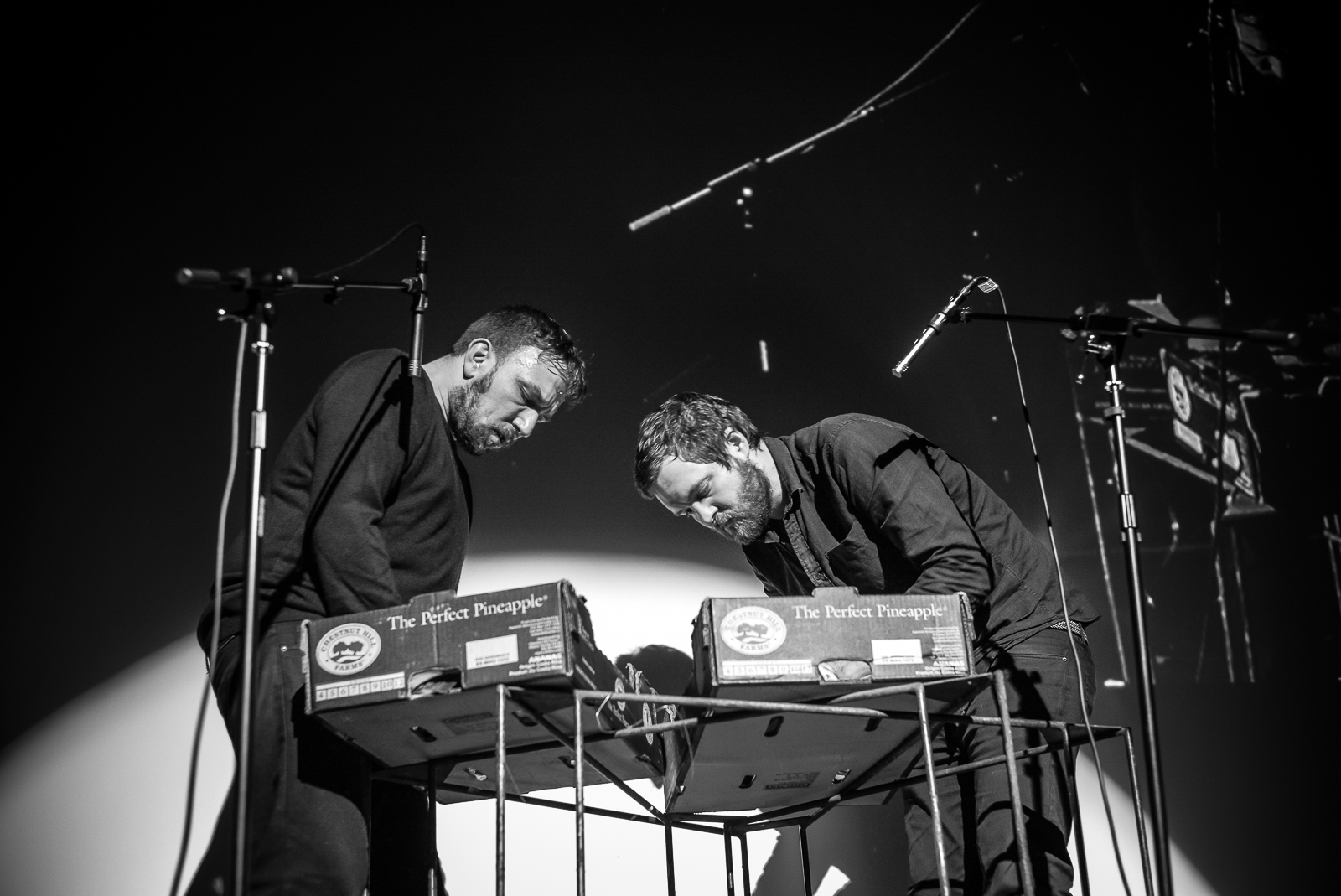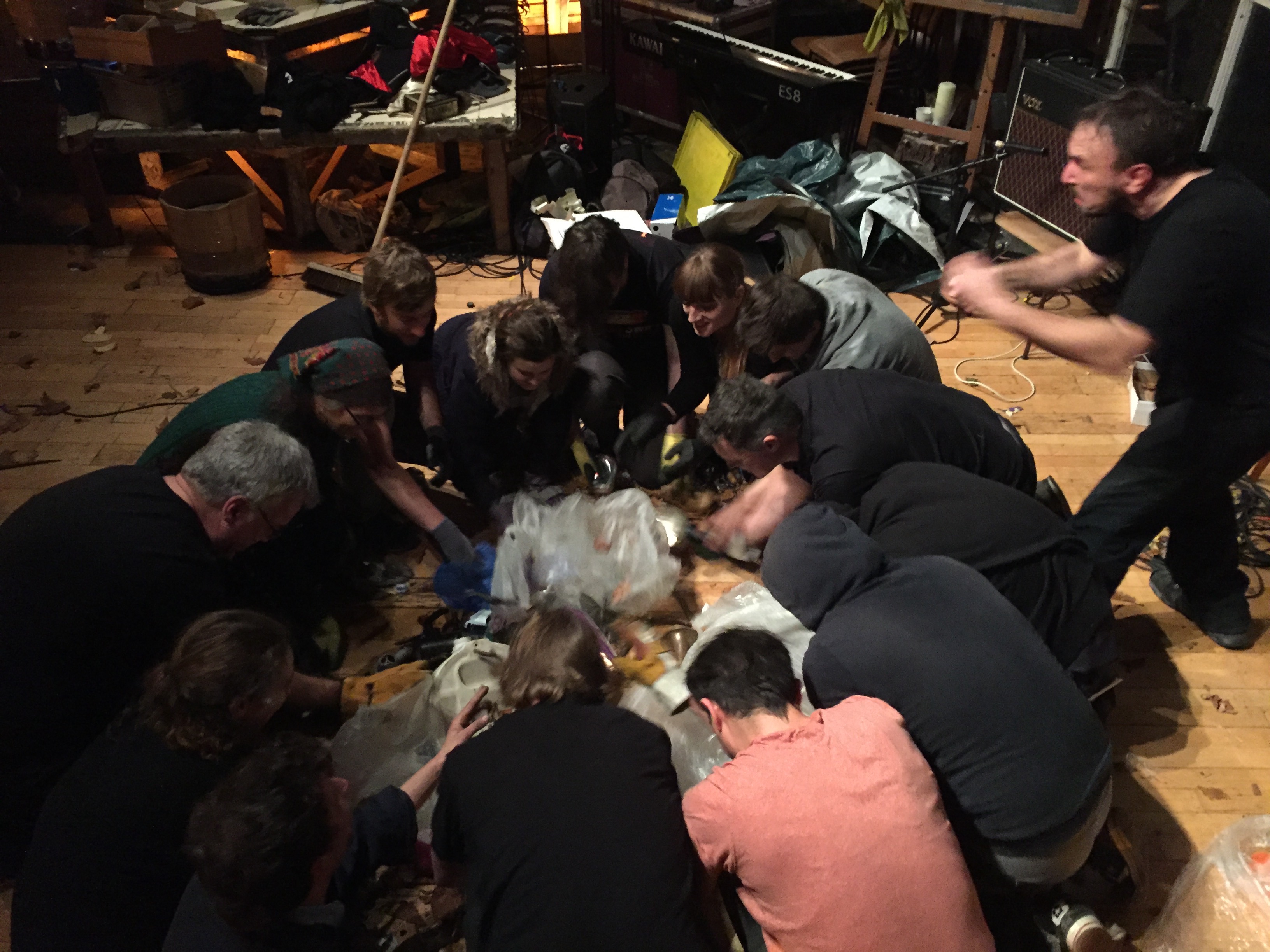Noise music, physical performance, improvisation, sonic exploration, materiality.
Rummaging is a performance practice concerned with reconciling these ideas. It brings performer and objects together to create visceral noise.
The practice typically involves placing objects in a container and manipulating these objects with the hands. Through the collision of the objects and due to their acoustic properties, a percussive noise music is produced.
Developed by myself and artist Henry Collins, rummaging evolved from our first performance together at a free improvisation workshop; the encounter became increasingly physical as Henry augmented the drum kit that I was playing with assorted objects found in the performance space until playing in any ‘normal’ sense became impossible. The resulting junk pile became my instrument. As a result of this encounter, it became clear that we shared similar ideas about the importance of physicality and the body in music. Henry had coined the term ‘rummaging’ to describe an embryonic version of the practice, and through further performances, different techniques were explored.
Rummaging has taken different settings and configurations; from art galleries to raves, solo, duo and in groups, with short physically intense performances lasting only minutes, to durational works lasting three hours or more. ‘Orchestras’ of rummagers have been conducted, and whole rooms filled with junk. Consequently, a distinctive practice has emerged.


When playing improvised music it became apparent that the moments that the greatest satisfaction were the fleeting and unpredictable moments of complexity that arose: micro-gestures that would appear and disappear, flittering moments where chance rhythms presented themselves and spoke to each other in ways outside of our conscious intention. Chaos, in the true sense of the word.
I believe strongly that when attempting to convey a musical idea, obstructions to the singular expression of that intent must be removed. The practice of rummaging establishes an environment that enables the performer to create a sound-world built on these micro-gestures and chaotic interactions, in a manner free from impurities and obfuscations.
The restraint imposed by rummaging is intended to free the mind from the conscious decisions involved in the creation of improvised music. The complexity that arises from the chance collisions of objects exceeds anything that could be created by the human hand. By removing the element of control, the player is free to focus on the resulting mesh of sounds. Allowing the mind to become saturated with the complexity of the sonic information provided by rummaging can facilitate achieving a clarity of thought. This re-enforces one of the principal aesthetic aims of rummaging; the attainment of purity through chaos.
Based on the original aims and objectives of the practice, a mission statement was drawn up:

(text version)
In the years since this statement was first written down, and as the practice has been developed through performances, it's safe to say that artistic license has been used regarding many of these points. Performances have used an entire room as the rummaging vessel, and objects manipulated with entire bodies instead of hands. Performances have been so physically intense that durations of more than a few minutes have been impossible. Rummaging orchestras have consisted of many performers, and different timbres and volumes used to create textures and compose performances. In a broader sense, rummaging has become an in "instrument" in its own right, alongside other performers and instruments. It may be required that the established conventions for rummaging are freely ignored in the process of musical experimentation, but to ignore these conventions however, it’s important to first recognise and understand their original purpose.